Features of New Year's Eve in Japan
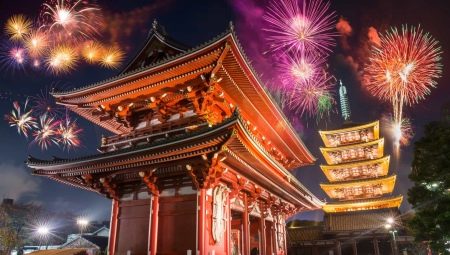
New Year - the most popular holiday, it is celebrated in almost all countries of the world. However, the celebration among different peoples differs both in traditions and in New Year's attributes. Celebrating the New Year in Japan also has its own characteristics.
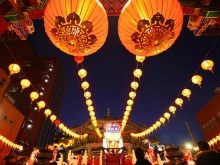
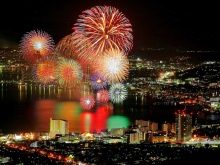
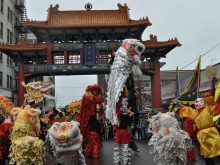
Description
Modern Japan celebrates the New Year with the rest of the world on the night of December 31 to January 1. But it was not always so. The Gregorian calendar was introduced in 1873. For historical reasons, the country at that time was going through a period of great transformations in all spheres of state life.
Until that time New Year in Japan according to the Chinese lunar calendar fell on one of the days in early spring, the date was not fixed. The calendar is observed in East Asia today. The holiday can take place on any date in the period from January 21 to February 21 (the second new moon after January 21).
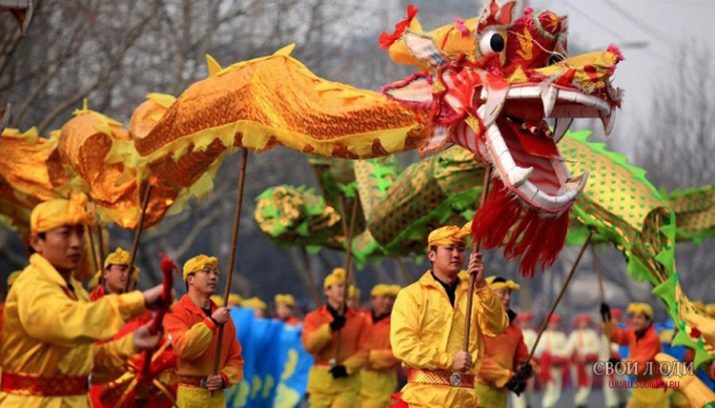
Restrained and hardworking in everyday life, the Japanese celebrate the New Year on a grand scale, creating a vibrant festive atmosphere. Everything around shines with illumination. Almost the entire country on December 28 goes on vacation until January 3. Business life freezes, the work of many state and commercial enterprises ceases. On the other hand, on the streets of cities and towns, fairs are opened, filled with New Year's souvenirs, decorations, and delicacies. Trade is going briskly, as souvenirs in Japan are presented not only to relatives. They are received by friends, clients of institutions, teachers, bosses.
Buyers often receive a small animal figurine as a gift from sellers - a symbol of the coming year.
It should be said that the tree is not a traditional symbol of the New Year in the Land of the Rising Sun. however, influenced by Western traditions, such decorations are increasingly seen at the entrances of shops and supermarkets.
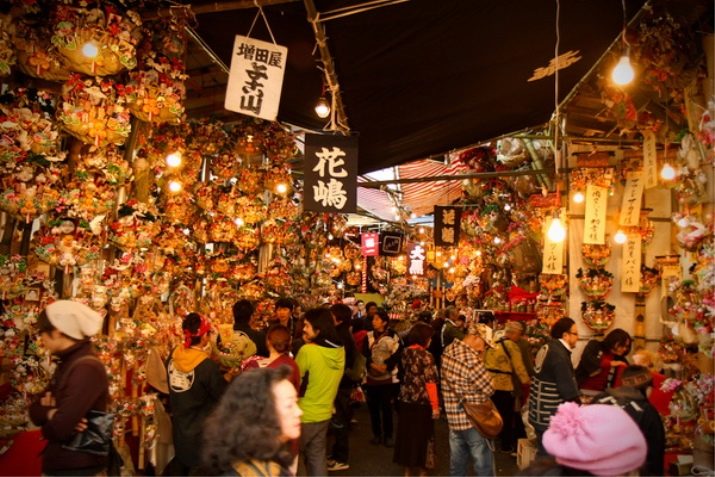
And also under the influence of foreign traditions appeared and the Japanese counterpart of Santa Claus or Santa Claus. They call him Oji-san. The character is becoming popular, he can be found in public places, at entertainment events in children's institutions. It is believed that he comes at night when the New Year comes and gives gifts to children.

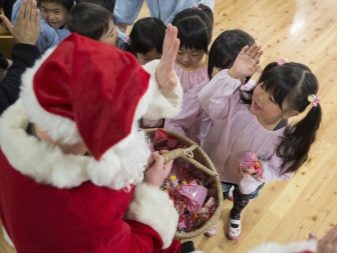
However, the traditional symbol is Segatsu-san, wearing a green or turquoise kimono. and having a long, almost to the ground, white beard. He goes to the houses of residents during the New Year's week to wish people happiness and good. He does not give gifts to children.
Today, when the date of the holiday is constant and the eastern calendar is no longer respected, the Japanese nevertheless do not abandon their traditions. This applies to dishes of the festive table, decorations of houses and streets, gifts, rituals.
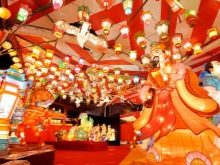
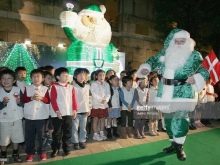

How are they preparing?
They begin to prepare for the big national holiday long before its onset. Already at the end of November, they start decorating streets and dwellings. In multi-colored décor, the main color is red.
It is considered very important to meet the coming year clean, so that, along with the dirt, problems from the previous year do not pass into the new one. The Japanese are known for their cleanliness, and their homes are always tidy. However, according to ancient tradition, they perform Susu Harai on December 13th. This is a ritual during which a general cleaning is carried out, because it is in a clean home that good luck will come. All objects in the house are cleaned, all unnecessary is thrown away. They wash away dirt from the walls of houses, roads and sidewalks, monuments with water and soap.
After that, at the entrance to the house, they place kadomatsu... It is a decoration made from pine, plum and bamboo. They are woven with a string of rice straw. On kadomatsu can be tangerines, fern branches, bunches of algae. Typically, decorations are placed on both sides of the front door.
According to legend, evil spirits are afraid of Kadomatsu. Inside the room, in secluded places, they put hamimi - a talisman against all sorts of troubles and dangers. It represents arrows with a blunt tip and white plumage.

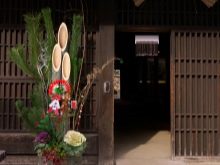
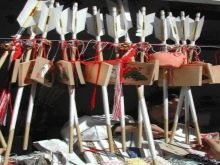
Just before the celebration Japanese take a shower and take a bath in ofuro (traditional Japanese bath), into which warm mineral water is poured. But not only the body and the house should be clean, but also the soul. Therefore, people try to pay back all debts and settle all disputes, if any, pay all bills. Negative emotions should be a thing of the past. And also in the last days of the outgoing year, the indigenous people pray and reflect on the deeds that they have done during the year.
An important part of preparing for the holiday is writing greeting cards... It is customary to send them to relatives, friends, acquaintances. Therefore, the post office is the only organization that has a lot of work during the national holiday.
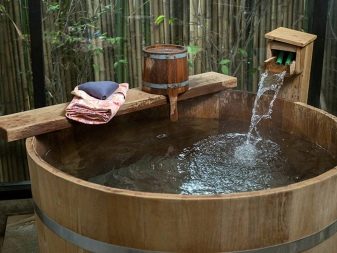
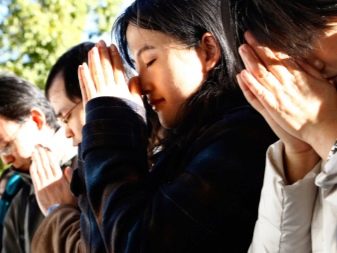
How is it celebrated?
New Year in Japan is celebrated in a quiet family circle... Usually, close people gather on the eve of the celebration. They decorate the house, prepare national dishes. Although modern Japanese people wear European clothing that is more suited to high-tempo daily life, New Year's is a great excuse to don beautiful kimonos.
The family meal takes place at home. It is spent in calm conversations, there is no noise and drinking songs. The meal does not last long, after the sound of bells from Buddhist temples, announcing the arrival of the New Year, people go to bed. Young people can go for a walk on the festive streets to watch quite modern fireworks.
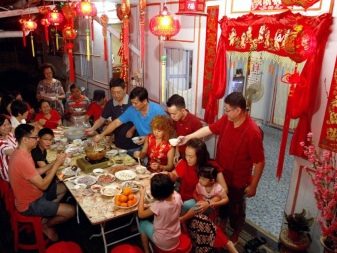
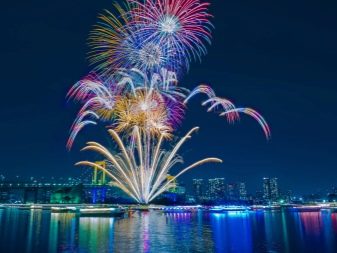
On the first morning after a gala dinner, the Japanese read New Year's greeting cards, of which there are so many... The afternoon is spent visiting relatives and friends to wish them happiness and success in the coming year. They are not warned in advance about visits. Visits are very short, often leaving business cards in a special place.
The Japanese are not overly religious. However, according to the national calendar, January is considered a friendly month in which new deeds and achievements need to be started. That's why weekends are dedicated to the first visit to the temple of the year. And also on January 2, ordinary citizens congratulate the imperial family.
Besides, in different regions of the country their own festivals take place, timed to coincide with the New Year holidays. For example, the festival of fire brigades, which takes place in Tokyo and other cities.
The origin of the parade has deep historical roots. Today it is a vivid show, during which there is a demonstration of achievements, a demonstration of unique tricks.
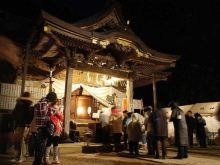
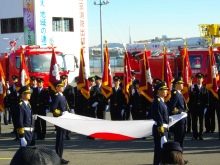
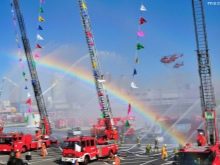
New Year decoration
After a general cleaning, the Japanese start decorating their homes. Although the main tradition is kadomatsu installationSome Japanese prefer to use a rice straw rope that is twisted and decorated with tangerines and ferns. It is also a talisman against evil forces and a guarantee of receiving a portion of happiness and health. The amulet is usually placed between the kadomatsu above the front door. It is often supplemented with a bundle of straw twisted into a circle. They use paper strips, fruits, straw bunches and even seafood as additional decorations.
Jewelry can be bought at a fair or in a store, and are often DIY.

The interior decoration of the room is a motibana... They make decor from willow and bamboo branches, and hang colored mochi figures (balls, flowers, fish, fruits) on them. Traditionally, they are colored pink, green, white and yellow. At the end of the holiday, family members eat the figurines. The number of figurines eaten depends on the number of years lived.
Ornaments from pine branches are usually placed on the gate. Sometimes they are complemented by straws, fern, bamboo, plum. And also on them there are white stripes of paper, which are folded in a special pattern. Magical power is attributed to jewelry, they symbolize various deities that guard the house and its inhabitants.
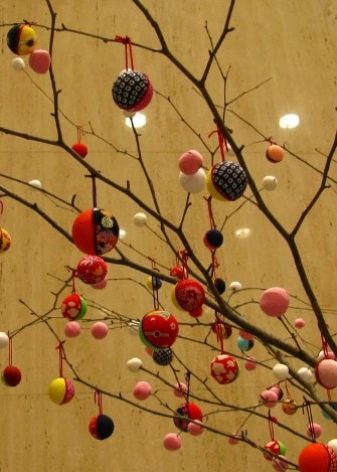

Festive table
The Japanese are not distinguished by gluttony; they are a nation of incomplete people. The New Year's table is not too abundant. It features traditional national dishes of seafood, rice and vegetables. Dishes have a symbolic meaning: they are identified with attracting good luck, prosperity and good health. The composition of the products may vary from region to region.
Most foods are sweet or sour, and many are dried and do not need to be refrigerated. The fact is that earlier, according to tradition, on New Year's days, housewives were not supposed to cook food, and the dishes were prepared in advance. Today, festive sets for the New Year's table - osechi - can be bought in the store. The products are packed in a nice box and stacked in layers. In the boxes you can find shrimps, dried sardines in soy sauce, boiled seaweed, sweet potatoes and chestnuts, fish pie.
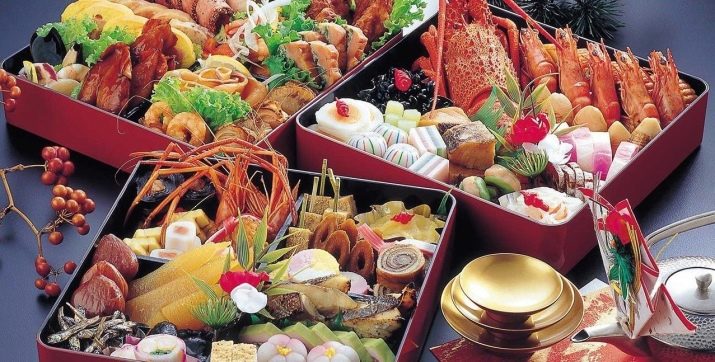
Before eating, it is customary to drink a ceremonial drink prepared according to an ancient recipe from sake with medicinal herbs. Mandatory on the table will be mochi dish - a special type of dough made from glutinous rice crushed into a paste. During the cooking process, its taste becomes sweet. Hard mochi cakes are traditional. They are fried over a fire, dipped in water, and then sprinkled with sugar and soy flour in a thin layer. Eating a mochi on New Year's Day means winning good luck to your side.
On the morning of the first day of the New Year, the Japanese eat zoni soup... It is made with mochi and vegetables. And also a symbolic decoration is prepared from mochi, which is considered an offering to the gods.It looks like a three-layer pyramid.
The pyramid stands until January 11, then it is taken apart, the cakes are broken and made into a stew of osiruki.
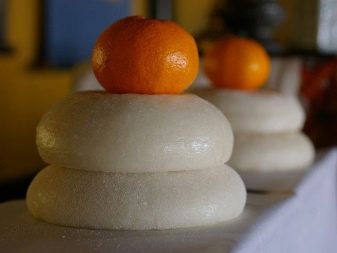

What do they give?
The traditions of giving New Year's gifts differ significantly from those existing in other countries. First of all, it is obligatory to send greeting cards to friends, relatives and acquaintances. There are rules on how and when to send them, and the fastidious Japanese adhere to them strictly. For example, a postcard is not sent to a family in which a loved one died in the past year.
It is considered acceptable to congratulate colleagues. In this case, the souvenirs will be symbolic and equivalent. For the boss, the gift is chosen more seriously. Cosmetic sets, souvenir national products, small necessary things, food can be presented as a gift.
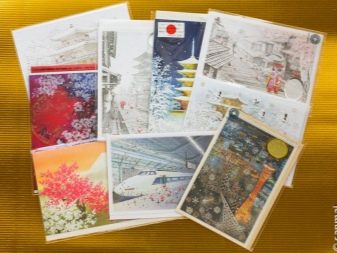
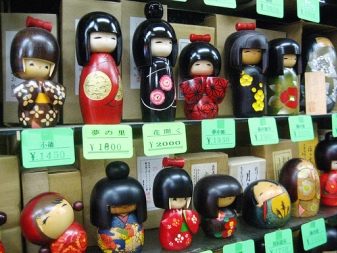
It is interesting to note that the Japanese consider food to be a very good gift. It can be beer, coffee, canned food. On New Year's Eve, shops provide a wide selection of festive food sets in beautiful packaging. Sweets are usually not given. The Japanese will be delighted if they receive a mochi. But it must be a handmade gift.
Don't give a rake. The owner of the house will definitely buy them himself in accordance with his taste.
Children in the family, of course, can wait for a New Year's gift. But tradition prescribes giving them money. Children receive money in a decorated envelope called potibukuro. The amount is determined by the age of the child. But if the family has more than one child, but several, then they usually receive the same amount.
And In Japan, there is an interesting practice: in the first days of January, shops sell gift sets in sealed bags or boxes. Although customers do not know what is in them, kits are popular because the price of a kit is often less than the sum of the individual items in the kit.
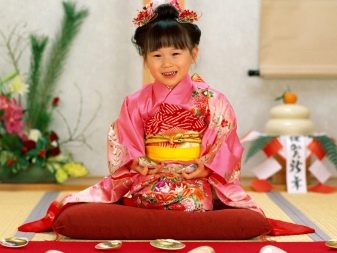
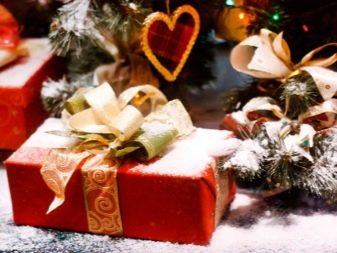
Traditions and customs
There are many associated with New Year's Eve in Japan. specific customs... Each attribute has its own symbolic meaning. For example, an indispensable part of the holiday is kumade, which is sold by absolutely all souvenir shops and temples. This is a bamboo rake that is needed in the fall for raking up fallen leaves. Kumade literally means bear's paw. People buy such rake-souvenirs, as it is believed that they contribute to "raking in" happiness, success, wealth. The rake is small in size (about 15 cm), they are often decorated with drawings and talismans.
It is impossible to imagine a Japanese New Year's house without a special decoration: a tree. The tree, which is called kadomatsu, can be located not only at the main entrance, but also indoors.

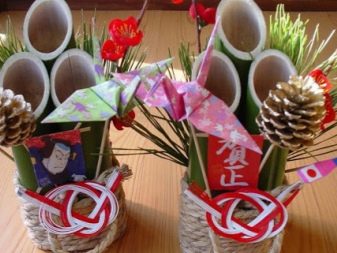
The festive night is also filled with symbolic meaning. At midnight, the Japanese hear 108 bells beating. These sounds are heard in every home, as all the bells in the country are ringing at the same time. Each new blow means the departure of human vices. The number was not chosen by chance. According to Buddhist belief, it is considered the number of such desires followed by pain and suffering. During the ritual, people laugh, as it symbolizes the beginning of a new life.
Among other attributes, it is acquired takarabune... It is a talisman in the shape of a boat, inside of which are rice and valuable gifts. There are 7 figures on the boat: deities symbolizing happiness and well-being.
On New Year's Eve, the talisman is placed under the pillow. From dreams you can find out what significant events will occur in the coming year.

For how New Year is celebrated in Japan, see the next video.








